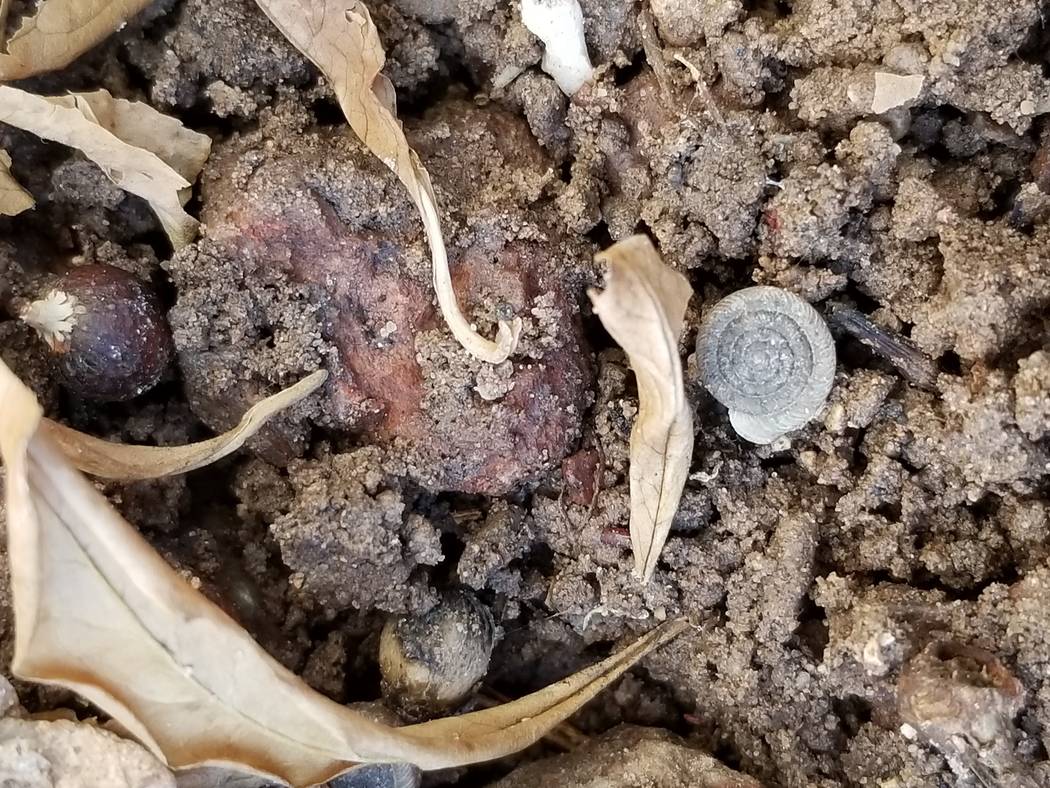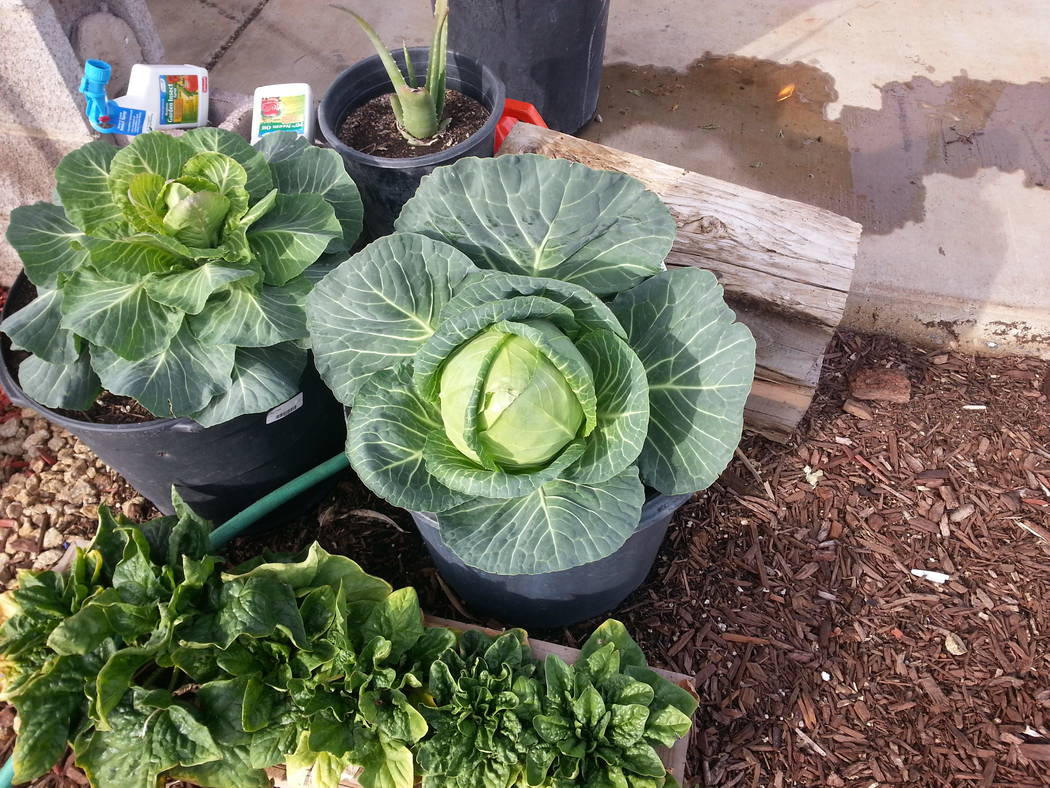Snails, slugs attracted to moisture, food in garden
Q: I have a vegetable garden that has been overrun with snails. They are various sizes. I have tried Cory’s Snail Repellent, beer traps using Budweiser beer and salt. I filled in holes in my block wall with dirt where they were hiding. These efforts seem to work, but I still have them. Is there anything I should try to get rid of snails?
A: Snails and slugs love where it’s wet. They also love food. Food and moisture make a perfect breeding area. The snails are probably all the same kind but different stages of maturity and probably laying eggs in your garden.
Abandon the vegetable garden for one growing season, pull everything out of it and let it go fallow, or dry, for one growing season. I’m not sure that allowing the garden to dry out for a long period of time all by itself is enough to kill all the eggs. Solarize the soil this summer or next summer with clear plastic to get the soil temperature over 160 degrees to kill the eggs.
Grow your vegetables in containers while the vegetable bed is fallow and start with all new and clean material in the containers. Rest the bottoms of the containers on a thick layer of coarse rock or place them in a pan of water so it acts like a moat. You can buy copper slug tape for the sides of the containers from garden supply companies to keep snails from climbing them.
As far as baiting, some gardeners use stale beer and others use fresh beer. It’s the yeasty smell that attracts them and the depth of the beer that kills them. The stronger the smell, the better. Baits work best if they are spaced 3 to 4 feet apart throughout the garden.
Other attractants include dog or cat food, sugar and yeast, and Sluggo. Sluggo also kills them because of the iron phosphide, which doesn’t hurt pets.
Layers of wet newspaper or cardboard also can work as a trap. Snails and slugs migrate under these wet surfaces during the day, where they can be collected and disposed of at dusk. Other wet materials work as well, such as large rocks or bricks, if they are easy to pick up and clean.
Q: I’m having trouble growing vegetables in raised beds. Something is eating the leaves and fruit. It must be at night because I don’t see anything during the day.
A: It would be helpful to determine what’s causing the damage. It’s easier to protect vegetables correctly if what’s causing the damage is known. Damage occurs from rats, rabbits, ground squirrels, birds, insects, snails and slugs.
The type of damage and evidence left behind should be a good clue. Larger varmints such as rats and rabbits leave damage and fecal deposits that are characteristic. Bird damage, in most cases, is very characteristic. Snails and slugs leave a slime trail that make them a dead giveaway.
Try growing vegetables in nursery containers for a change. They can be moved to different locations, elevated and spaced different distances apart for different vegetables. If the soil becomes contaminated or infested, dump it, clean and sanitize the containers and refill them with new soil.
Use at least a 5-gallon plastic nursery container because volumes of soil smaller than this are hard to keep wet during the summer. Painting them white is not necessary but does reduce the temperature of the soil and potential heat damage.
The soil used in containers affects its weight and how often you must water. Some lightweight soil mixes might need watering twice a day, morning and afternoon, during the summer.
The best exposure for summer vegetables is eastern provided they get six to eight hours of sunlight and have protection from the wind. Straw bales or constructed windbreaks help improve vegetable quality in this regard. During the winter, move the containers to a southern exposure where it’s warmer.
Fill containers so the soil is 1 inch below the top lip of the container. That should provide enough head space that hand watering with a hose will force water out the bottom of the container. You want about 20 percent of the applied water to flush salts from the soil.
Once you determine the varmints causing the damage, then decide how to protect your vegetables from more damage. That might include caging, bird netting, baits and traps and possibly some carefully selected and placed varmint poisons.
Q: I have had a problem with my two 20-year-old Wheeler’s Dwarf bushes since last November. This past year the leaves and stems appear burnt and chalky white. I’ve increased the water on the timer and watered by hand with no difference. I’m using an 18-18-18 fertilizer with no improvement. I have rock cover around it, but it’s been there for 20 years. Leaves on the underside of the bushes also look healthy.
A: One of the causes of the historical Dust Bowl years and criticisms of traditional agriculture is soil depletion. Wheeler’s Dwarf is a mock orange considered to be a nondesert shrub taken from Japan and Korea. As plants become less healthy from soil depletion, they are more susceptible to environmental stresses like heat, cold and nutrition. I think your plants’ luck is starting to run out.
This shrub was never intended for desert landscapes. When it was planted, the soil was probably amended with organics quite nicely. With the soil covered in rock, the organics in the soil disappeared, soil nutrients started to run out, and the plant became more susceptible to environmental stresses like heat. My guess is the problem parts of that plant are facing west and south where sunlight and heat are more intense. Eventually, it will get worse.
It might be too little too late, but I would pull the rock away from these plants, auger holes in the soil 18 inches deep and put compost in these holes. Put a layer of compost on the soil surface surrounding them and replace the rock. Cleanup the shrub with some pruning, and you should see dark green new growth next spring in these locations.
This might need to be done every three to four years. Make sure the shrubs are getting water applied to the soil evenly underneath their canopies. Add more drip emitters if you need to make it happen.
Q: When is the best time to prune Mexican redbird and lantana?
A: Light pruning — an occasional snip here and there with hand pruners — can be done anytime. I wouldn’t shear them unless it’s done very early in the season and you want their canopies to become dense.
But major pruning, such as removing entire stems or cutting the plant close to the ground, should be done during winter months. Both plants are grown in the tropics so lantana tops die back after a light freeze, but the plant will grow back, and red bird of paradise looks bad after a heavy freeze.
Because lantana is a sprawling plant, prune it 2 inches above the soil, anytime you want, during the winter months. If the plant is brown during the winter and you’re sick of its looks, prune it. Just do it before spring growth. In the spring, fertilize and water it.
Pruning the red bird of paradise, aka Mexican redbird, has more options. There is a yellow version of this plant called the desert bird of paradise that is slightly more cold tolerant. If it’s getting too big, oddly shaped or damaged, prune it 6 to 8 inches from the ground during the winter like lantana, and it will grow back with a different shape. If you want to make it smaller, remove three or four of its tallest or longest shoots entirely to a crotch during the winter months.
If the plant is growing with an open canopy, increase its density or how full it appears, by pruning its longest shoots with heading cuts, which are done somewhere along the length of a solitary branch. Three new shoots will appear 4 to 6 inches below this cut in the spring. They will grow in three different directions seeking light. Make cuts where you want next year’s new growth to begin.
Bob Morris is a horticulture expert and professor emeritus of the University of Nevada, Las Vegas. Visit his blog at xtremehorticulture.blogspot.com. Send questions to Extremehort@aol.com.
























